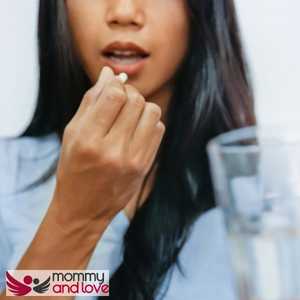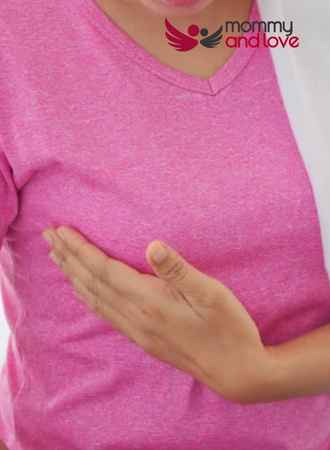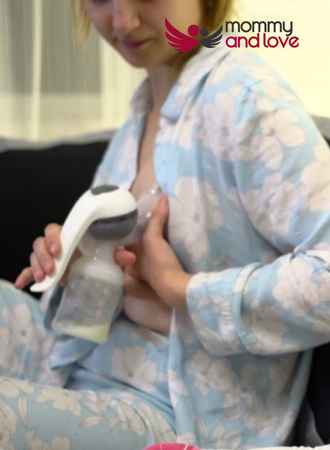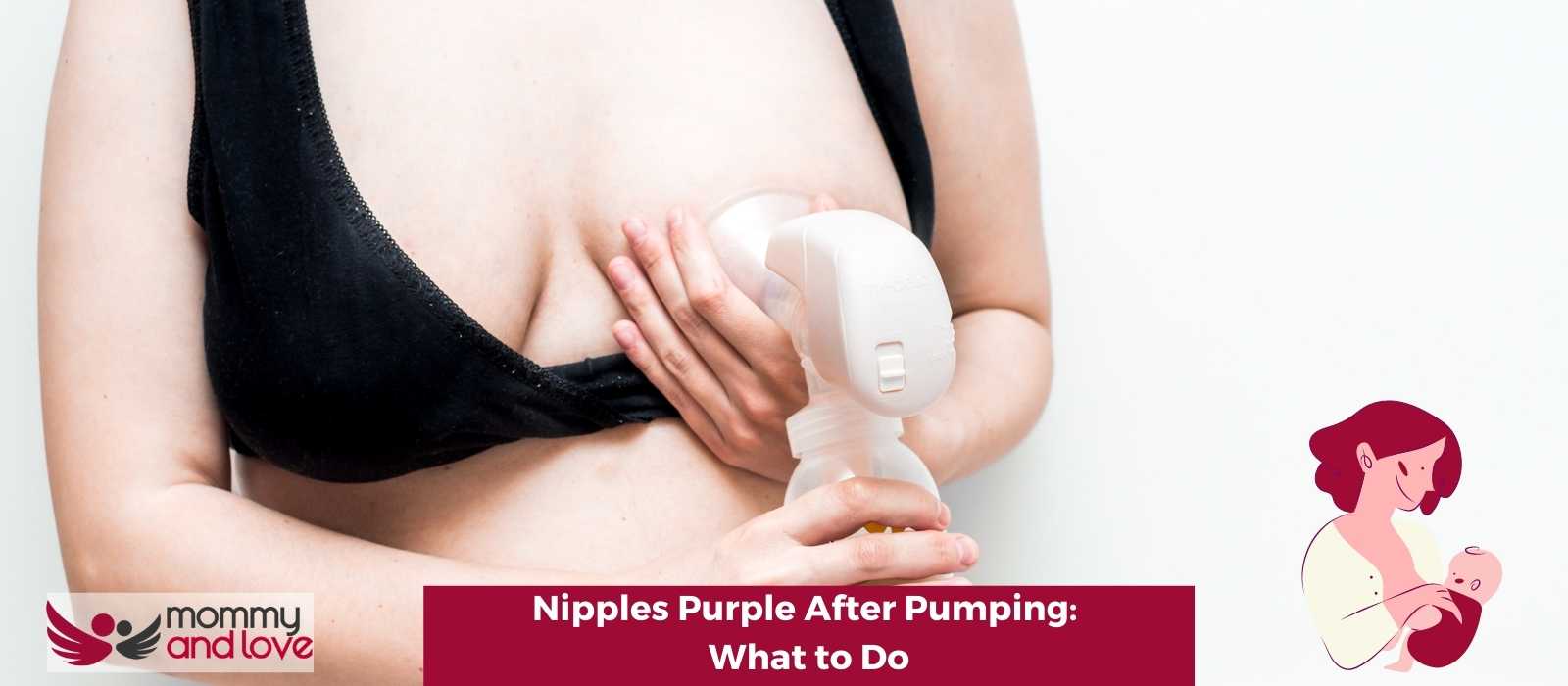If your nipples turn purple after pumping, don’t worry – you’re not alone! This is a common issue of the breasts for many women, and there are steps you can take to correct it.
We discuss the causes of purple nipples after pumping and what you can do to make them go away. We will also provide tips for avoiding this issue in the future. Keep reading to learn more!
Why Do Nipples Turn Purple When Pumping?
Nipples turning purple when pumping is caused by the decreased blood flow in the breasts. When those blood vessels become engorged with blood, they can cause the nipples to turn purple.
There are a few things that can cause this to happen.
One is if the pump is set too high.
Another is if the woman is not properly hydrated. And, finally, purple or dark nipples could be a sign of an infection or other breast conditions which should be diagnosed by a doctor right away.
What Are Nipple Vasospasms?

Nipple vasospasms are a common occurrence during lactation. They can affect other blood vessels in a similar way such as in the brain, heart, and eyes.
During lactation, they can be caused by many things, including a let-down reflex that is too strong, an overabundance of milk, or even something as simple as clothing that is too tight.
Nipple vasospasms can be very painful and can make breastfeeding difficult or even impossible. It can be caused by a variety of things.
- Birth control pills and oral contraceptives
- Irregular menstrual cycle
- Premenstrual syndrome
- Exclusive pumping
- Family history of Raynaud’s phenomenon
- Cold feet and hands
- Taking supplements
- Other hormonal changes in the body of a person
Signs and other symptoms:
- Experience pain
- Darkening nipples before nipples return to normal color or turn white
- Color change of areola
- Burning pain
- Severe pain
Thankfully, there are things that can be done to ease the nipple pain and help prevent nipple vasospasms from happening in the first place.
What to do if you Experience Nipple Vasospasm

If you are experiencing nipple vasospasm, the first thing you should do is try to relax. It may sound counterintuitive, but stress and tension can make vasospasms worse. Take a deep breath and let it out slowly.
If you can, remove yourself from the situation that is causing the vasospasm and take a few minutes to calm down. You may also want to try massaging your breast gently or using a warm compress to relax the muscles.
Once you have the pain under control, there are a few things you can do to prevent nipple vasospasms from happening in the future.
Make sure that you are wearing loose, comfortable clothing, and that your bra is not too tight.
Avoid using soaps or other products on your nipples, as they can be irritating.
And if you are still having trouble, talk to your doctor or a lactation consultant immediately about possible treatment solutions. With a little bit of effort and help from your doctors, you can overcome nipple vasospasms and continue to enjoy nursing.
How Do You Heal a Bruised Nipple From Pumping?

If you’re a nursing mother who uses a breast pump, you may have experienced bruising or soreness on your nipples. This is fairly common and usually nothing to worry about. However, this condition can result in other breastfeeding difficulties.
If notice that the bruising on the skin is severe or doesn’t seem to be healing, there are some things you can do to speed up the healing process.
To start, make sure you’re using and placing the pump correctly. Such placement can prevent bruising and soreness, so it’s important to get the technique down before you start pumping breast milk.
Once you’re sure you’re using the pump correctly, try these tips to heal a bruised nipple:
- Apply a cold compress to the area for a few minutes several times a day. The cold compress helps slow swelling.
- Take a pain reliever like ibuprofen to help reduce inflammation.
- Gently massage the area with approved nipple cream or ointment.
- Make sure you’re wearing a well-fitting bra that isn’t too tight. A supportive bra can help take some of the pressure off sore nipples.
With a little TLC, your bruised nipple and other symptoms should heal up in no time.
If you’re still experiencing pain symptoms or bruising after a few days, though, be sure to talk to your doctor immediately.
Doctors can help you determine if there’s another underlying health issue causing the problem and give you answers to your questions and advice accordingly.
When Do Normal Breast Changes Happen?

It’s important to understand that you will notice changes to your breast such as an increase in size or changes to the color of the nipples are absolutely normal, especially in nursing and pregnant women.
For instance, the nipples and surrounding skin become darker during lactation or late pregnancy so that the infant can easily locate the food source.
All kinds of changes happen during pregnancy and lactation and these changes usually happen as your breasts grow according to the World Health Organization (WHO).
Can Your Nipples Get Bruised From Breastfeeding?

Yes, nipples may get bruised from breastfeeding. However, it is not common and usually only happens if the baby is not latched on correctly.
If you think your baby may be latched on incorrectly, consult a lactation specialist or your doctor.
Bruising and other symptoms can also occur if you are using a breast pump incorrectly. If you do experience bruising, it should go away within a few days.
Conclusion

Bruising and soreness on the nipples are common symptoms for nursing mothers who use a breast pump.
While it may be uncomfortable, there are ways to ease the pain and promote healing. With a bit of patience, you should be back to your old self in no time.
If you’re still experiencing pain or bruising after a few days, be sure to talk to your doctor for treatment and diagnosis. Doctors will give you professional advice accordingly.
There is a wide range of peer-reviewed studies from academic research institutions and tertiary references following strict sourcing guidelines that you can read either online or offline regarding this subject.
It’s important to search for answers and obtain more info about the changes in your body especially if you’re new to being a mom.

This article was written by Sandra Baker – full time writer and the mother of four amazing kids (including twins!)
She’s also a breastfeeding counselor and has spent years helping new parents learn how to care for their children. When she’s not writing or caring for her children, Sandra likes to spend time reading and taking walks with her husband.





